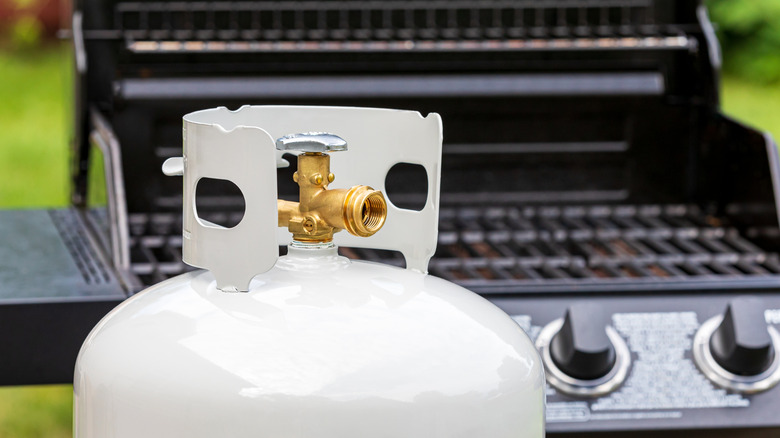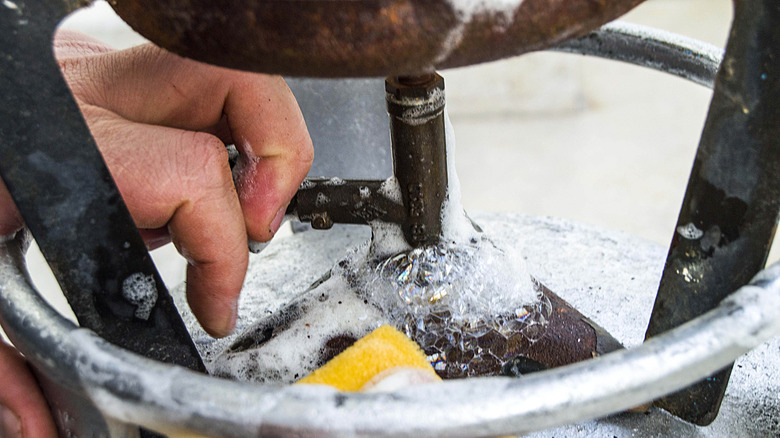The Right Way To Check Your Propane Grill For Leaks
The sun's out, your burgers are seasoned Bobby Flay-style (salt and pepper only), and you've properly checked your propane levels with a cup of warm water. All that's left is firing up the grill — unless your propane tank has other plans. Propane leaks are easy to overlook. Sure, you may catch a whiff of rotten egg smell if the leak is strong enough, but a slow one could sneak right under your nose, literally and figuratively.
The good news? It's usually easy to spot with several household items you'll find under your kitchen sink, and can be a quick fix.
First things first: Make sure the valve on top of your propane tank is turned all the way to the right (righty tighty) in the off position. Then grab some warm water, dish soap, and a spray bottle or bucket. Mix together equal parts soap and water and apply it with the bottle or a paint brush to both valve connections, the hose, and anywhere gas flows from the tank to the grill. Once everything's coated, slowly turn the valve back to the left (lefty loosey) to open the gas, but don't light anything yet. Watch for bubbles at each connection and along the hose where you applied the solution, and listen for the sound of escaping gas.
If you hear a hissing sound, stop right there — it means there's probably a gas leak and you'll likely see bubbles. No bubbles? That's great news — you're good to grill. Bubbles? No worries. It's usually an easy fix.
How to fix a propane leak and prevent the next one
Leaks happen, especially on a grill as well-used as yours. Since the soap trick worked, you've now identified the culprit, and luckily, grill parts are easy to come by. Here are a few tricks to try first.
Turn off the gas again and disconnect the hose. Sometimes it's just a bad connection, so you'll want to wipe everything down and make sure there's no rust, grease, or debris in the way. Then reattach the hose for a snug fit and test again. If the bubbles are still there, you might be dealing with a worn-out gasket or a crack in the hose. The bright side to this problem is that propane hoses use a common connection.
They're also fairly inexpensive and available at your local hardware store — perfect if you're in a pinch and don't want to wait around for an online order. Most grill manufacturers have a replacement guide on their website; have your grill model number handy so you'll be sure to get the correct part.
Once you have your replacement locked in, repeat the soapy process to make sure everything worked and your connections are tight. To play it safe in the future, it's a good idea to test for leaks every time you replace your tank. Now that the foam is gone, it's time for fun. Open that grill lid, turn that propane knob to the left, fire it up, and get to flipping.

